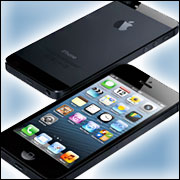
Smartphone usage is up in the U.S., with Apple and Android the preferred brands for the first three months of 2013, according to a recent report from comScore.
Apple’s iPhone accounted for 39 percent of the U.S. smartphone market in the first quarter of the year, a 2.7 increase in market share from the previous three-month period. That puts the company in first place ahead of its chief rival, Samsung, which also had a slight market share bump to claim a 21.7 percent share.
HTC, Motorola and LG snagged the remaining spots in the top five U.S. handset makers, despite all losing marketshare during the quarter.
Google’s Android platform is still the leader on the software side, even though the operating system has seen three consecutive quarters of declining market share. Android phones made up 52 percent of the market during the year’s first quarter, a 1.4 percent drop from the previous quarter. Apple’s iOS took second place, up 2.7 percent on the quarter with its 39 percent market share.
BlackBerry came in a distant third, taking 5.2 percent of the market share, with Microsoft and Symbian rounding out the top five.
Smartphone ownership overall rose 9 percent in the U.S. since December, with the devices now accounting for 58 percent of the mobile market penetration.
Waiting for What’s Next
The first three months of 2013 didn’t reveal any unexpected twists in the ongoing smartphone battle, but it did show that the market is open to the latest iPhone competitors from Samsung and HTC, said Colin Gibbs, analyst at GigaOM Pro.
Samsung’s upcoming Galaxy S4 and HTC’s One — the device the company is banking on to reverse recent losses in the smartphone market — could shake things up a little, said Gibbs.
“Samsung has done a tremendous job building a mobile brand to rival the iPhone, and the HTC One is getting very solid reviews,” he told the E-Commerce Times. “So I expect both the HTC One and the Galaxy S4 to sell very well, which would give Android a boost.”
New Phone Every Season
With the market so heavily dominated by Android and Apple, it is becoming increasingly difficult for the smaller platforms to gain traction going forward, Gibbs not. The next few quarters, however, could swing more in BlackBerry’s favor if the launch of its Q10, not available yet in the U.S., goes well.
“I don’t expect Windows Phone to suddenly catch fire, but I do think it will continue to gain gradual momentum,” he said. “But the device I’ll be watching is the BlackBerry Q10, which is targeted directly at the hardcore business users that were once RIM’s bread and butter. The Q10 has strong carrier support in the U.S., and strong sales would bode very well for BlackBerry’s comeback hopes.”
With not a word from Apple about an iPhone launch, the company nearly runs the risk of being an afterthought during the first quarters of the year, said Ben Bajarin,director and founder of Creative Strategies. However, that won’t last long once buzz begins about the next iPhone.
“Seasonal smartphones purchases were always a factor, but I sense they are becoming more of a factor,” he told the E-Commerce Times. “It seems as though carriers and OEMs like Apple have been encouraging a second half of the year upgrade cycle.This is particularly the case for the high-end or more heavily subsidized premium phone markets. I sense this shift will have early and mid-year impacts on all major players.”












































Social Media
See all Social Media